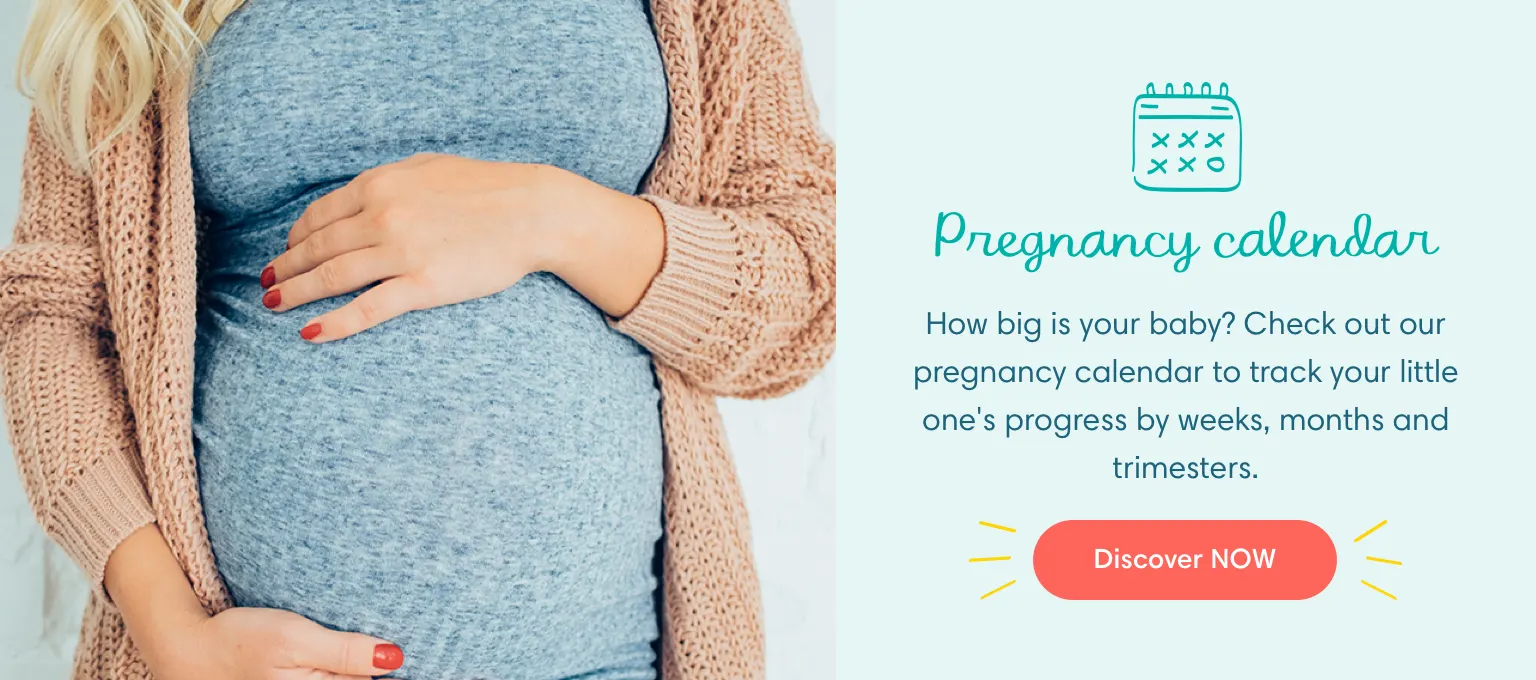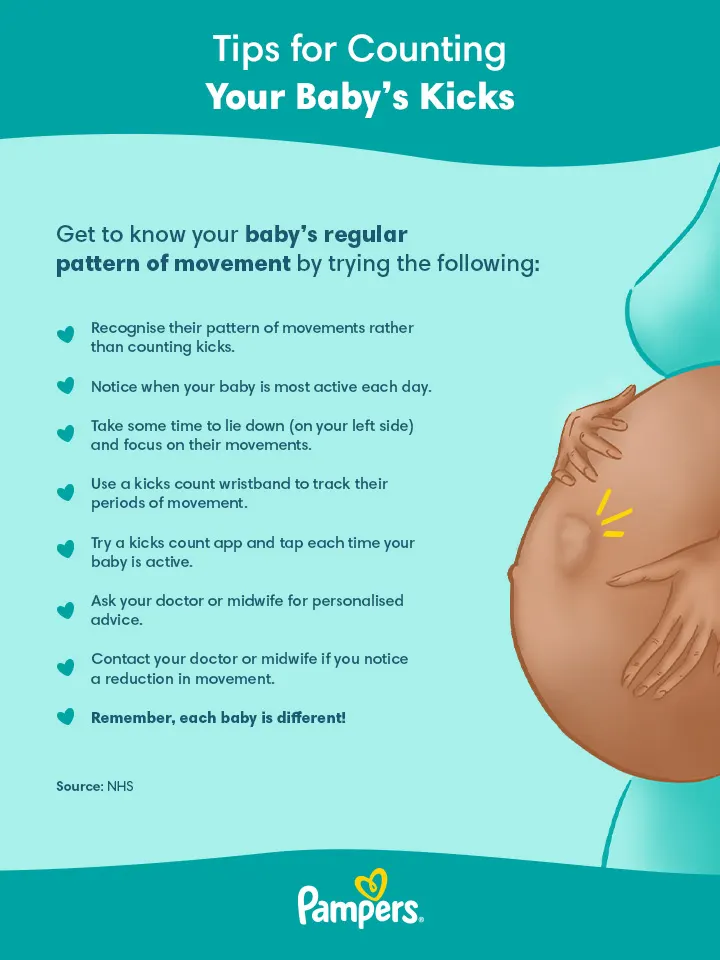How to Do Kick Counts
If you're curious about kick counts, you've likely already experienced your baby's initial movements and are becoming familiar with those little flutters and punches. As you enter the final trimester of your pregnancy and approach your due date, you might be considering counting your baby’s kicks to monitor their movements. Read on to gain insight into what kick counts entail, whether you need to do them, and how often you ‘should’ feel those tiny movements.
What Are Kick Counts?
Kick counts are when you count your baby’s kicks and other movements. Feeling your baby move for the first time is sometimes called quickening, and you’ll likely notice those little flutters and kicks more and more as your pregnancy progresses. You may also begin to notice a pattern in your baby’s movements and become more aware of when they’re awake and feeling energetic or when they’re snoozing.
Is Kick Counting Important?
Although you may have heard of people counting kicks during pregnancy, experts actually suggest that it’s more important to get to know your baby’s pattern of movements rather than counting them.
Becoming familiar with your baby’s movements can help you notice if there’s any change or decrease in them and thus ensure you can contact your doctor or midwife if you have any concerns.
When to Start Kick Counts
As you make your way through your pregnancy, you might wonder when to start counting kicks. As we mentioned above, experts deem it more important to become familiar with your baby’s pattern of movements rather than counting the number of kicks.
You’ll likely feel your baby move for the first time between 16 weeks and 24 weeks of pregnancy. If this is your first pregnancy, you may not feel those first movements until after 20 weeks.
These little movements may feel like a gentle flutter, swish or roll to start with and may change and feel stronger as your pregnancy progresses. You’ll likely feel them more and more up until about 32 weeks and then they may stay the same until you go into labour.
During this period, it’s important to get to know these movements and keep track of your baby’s pattern, such as the type of movements they make and the times when they’re likely to be more active.
How Often ‘Should’ You Count Your Baby’s Kicks?
There’s no set amount you ‘should’ count kicks, just like there’s no set number of kicks or other movements that you ‘should’ feel from your baby. Remember, every baby is different, and what’s most important is to familiarise yourself with your little one’s ‘normal’ movement pattern over time.
As your baby’s movements become stronger, you may be more able to notice a pattern emerging. Perhaps you’ll notice your little one is more active in the afternoon or evening, which is generally a peak time for activity in many babies. Babies also have sleep periods throughout the day and night, usually lasting up to about 40 minutes.
But it’s important to remember that all babies are different, and if you’re unsure about your baby’s movements or you notice a reduction, contact your doctor or midwife.
How Do You Count Your Baby’s Kicks?
As we mentioned above, becoming familiar with your baby’s movements is important; however, you don’t need to actually count their kicks to do this – it’s all about getting in touch with your baby bump and recognising those periods of movements from your little one.
If you have a busy lifestyle or you simply haven’t noticed a pattern in their movements yet, you might like to try some of the following tips to help you on this journey.
Take some quality time to relax and focus on those little flips and kicks:
Choose a good time. For starters, try to choose a time when your baby is likely to be active and not sleeping, keeping in mind that most babies have short sleep cycles that last from 20 to 40 minutes. After a meal is often when babies are more active, so that is often a good time to take note of their movements.
Lie on your left side. It’s easier to feel your baby’s movements if you position yourself on your left side.
Relax and focus. It’s important to calm your mind and body so you can focus on your baby’s movements for the next two hours and see what you notice.
This is also a good method if you think your baby’s movements have reduced. If that’s the case, contact your doctor or midwife straight away.
Use a Kicks Count Wristband. Another great and simple way to keep track of your baby’s movements is with a Kicks Count wristband. These wristbands help you track your baby’s periods of movement, making it easier to notice any changes. When you feel a period of movement from your little one, you simply slide the plastic slider on the Kicks Count wristband to the next number. It doesn’t matter how many times you move the slider in a day – every pregnancy is different – it’s just a way to help you track movements and recognise your baby’s pattern.
Try the Kicks Count App. This works similarly to the wristband, but you tap in the app each time your baby has a period of movement in a day. The app will then record how many periods of movement your baby has each day and may help you understand the pattern of their movements.
You can go to https://www.kickscount.org.uk/ to find out more about the NHS-approved Kicks Count Wristband and App.
How to ‘Get’ Your Baby to Move For Kick Counts
It’s not recommended to try to ‘get’ your baby to move. If you have any concerns about their movements, contact your doctor or midwife right away instead of trying to encourage movement.
When to Contact Your Doctor or Midwife
Babies’ movements generally increase and become more noticeable up until about 32 weeks, then they stay the same until labour (or even continue during labour). During this time, it’s important to become familiar with these movements and your little one’s patterns.
If you notice a significant drop in activity or no activity, it’s important to contact your doctor or midwife straight away. Even if you’re unsure, it’s better to contact them for advice and reassurance. Most likely, there’s nothing wrong, but it’s always best to check and catch any problems early.
FAQS AT A GLANCE
There’s no set number of kicks you should feel. Every pregnancy is different and that means that each baby will have their own pattern of movements each day.
Instead of counting kicks, familiarise yourself with the movements your baby makes and the times of the day when they’re active.
The Bottom Line
Counting kicks may seem like a helpful method for monitoring your baby's well-being, but the NHS advises against it, as it may not provide an accurate representation of your baby's health. Instead, focusing on understanding your baby's unique pattern of movements is important. By familiarising yourself with your baby's normal activity levels and being mindful of any significant changes, you can better identify potential concerns and seek medical advice when needed. Ultimately, the key lies in staying in tune with your baby, fostering a healthy bond, and ensuring the best possible care for both you and your little one.
Whilst you’re having fun observing your baby’s little kicks and flutters, why not spend some checking out baby names by using our Baby Name Generator.
How We Wrote This Article The information in this article is based on the expert advice found in trusted medical and government sources, such as the National Health Service (NHS). You can find a full list of sources used for this article below. The content on this page should not replace professional medical advice. Always consult medical professionals for full diagnosis and treatment.
Join Pampers Club and get:





